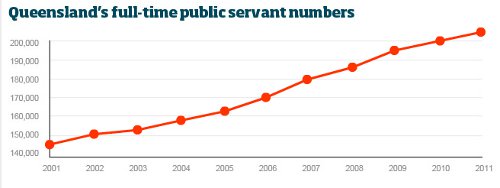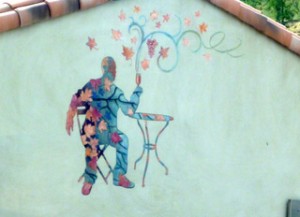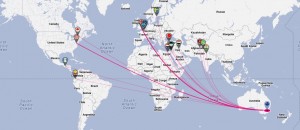If the Queensland government is interested in privatising anything, they could do worse than running their ruler over WorkCover.
They must be sensitive about their latest price hike – I’ve never before had a phone call from WorkCover to inform me that my premiums are about to rise.
Perhaps they are super sensitive in that an increase of 23.4% for video stores is well above the 13% average increase, which in itself is quite bracing.
What is going on here?
Well as insurance premiums inevitably lag the market, this will reflect past events, so presumably one, or a combination, of three things has happened:
- premiums have been set too low, leading to under-provisioning and insufficient reserves;
- accidents have increased;
- payouts have increased faster than the rate of growth in the economy.
Actually point one can operate entirely on its own, as in when a company unsustainably under-cuts its competitors to buy business, or may be a byproduct of two and three.
Point three can be a byproduct of lax dispute settling procedures, or increasingly generous judges.
I’ll send a copy of this blog off to WorkCover to see if they will disentangle this for me.
It is certainly hard to see how the increase could be justified in the case of video stores.
WorkCover premiums are automatically indexed to growth in the economy as they are a percentage of your wages bill. As the economy grows, wages grow, and so does the premium.
Video Stores have a fairly low risk of injury to staff. Paper cuts are the worst injury you encounter on a regular basis – or attention deficit disorder because something really cool is playing on the instore television.
This is reflected in our premium being $0.47 per $100 of wages. This will now increase to $0.58.
The man who rang me from WorkCover advised me that premiums are set on the basis of a client’s claims history, and the claims history of the industry.
We haven’t had any claims, so this increase must be based on the industry. I find it hard to believe that there has been an increase of 23.4% in accidents in the video industry, or that judges have suddenly become over-generous in what awards there have been.
That all points to WorkCover having under-provisioned in the past.
So it’s probably not Campbell’s fault, but another mess he has to clean up.
And if he is to clean it up, I’d suggest investigating the prospects of privatisation at the same time that the area is opened-up to competition.
Just as third party insurance is compulsory, but you can have your choice of private insurer, the same ought to be true of workers’ compensation insurance.
While the government enjoys a monopoly position, no-one in business could have any confidence that the premiums are being set fairly and honestly.
And as an operating insurer, WorkCover has a book that has an asset value from which the state could realise some money to apply to reducing that debt and getting back our Triple A credit rating.








